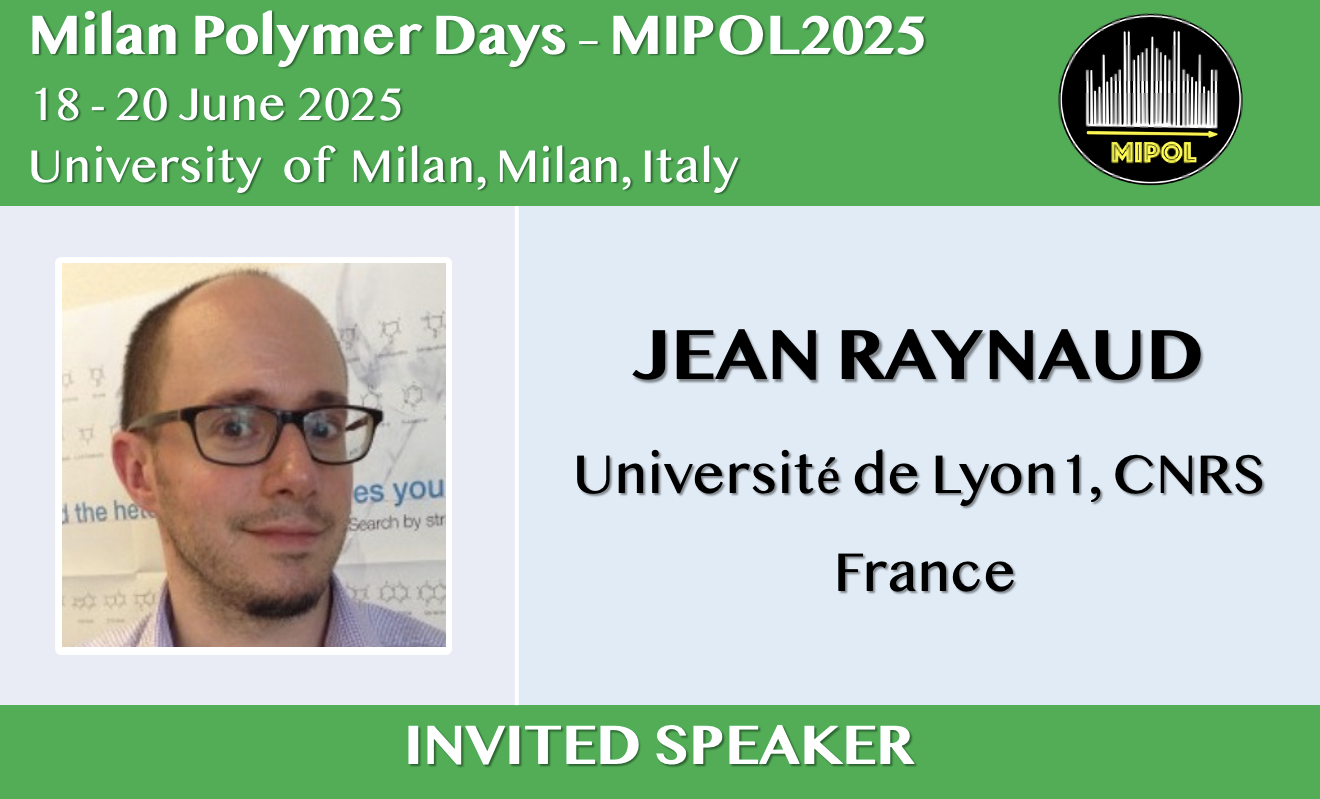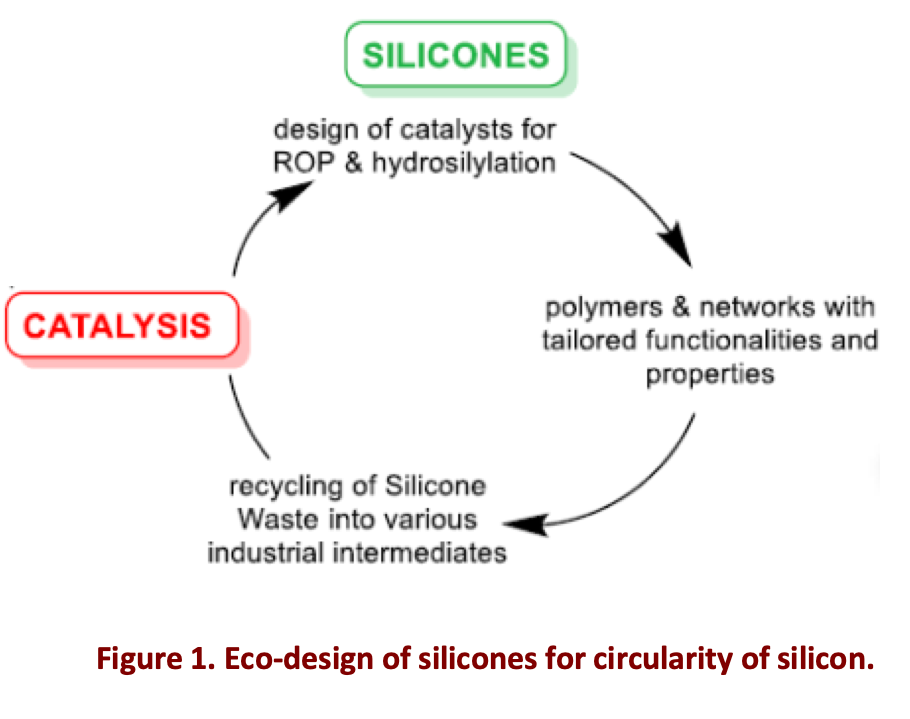Eco-design and circularity for silicones
Abstract

Silicones are ubiquitous materials, owing to their versatile properties than are finely adjusted throughout their synthetic processes. They are found in many everyday life applications (infrastructure, packaging, transport, energy, health…) under many forms (tubing, insulators, coatings, etc) from elastomers, gels, foams [1,2]. Advantageously utilizing catalysis for the tailored synthesis of silicone materials is instrumental to the industry of this inorganic polymer. By appropriately selecting the catalyst combination, one can finely tune the properties of silicone networks [1]. It is possible to map a catalyst/architecture/properties relationship for these high-performance materials. These “turnkey” solutions allow for a rational eco-design, adapted to the application. Similar solutions are necessary for the recycling of silicones, at any stage of their lifespan [2].
We have introduced various-sized loops of chemical recycling for silicones. Since their synthesis relies on the mining of quartz, its metallurgy (reduction to Si) and subsequent Müller-Rochow process (oxidation to install Me- and Cl- substituents), circumventing these energy-intensive steps is appealing for a sustainable Si integrated industry. On the one hand, we designed a back-to-cyclics catalyst with ideal ion pairing – potassium silanolate + complexing agent – to produce D3-4-5 cyclosiloxane monomers from many silicone wastes including used oils and unfilled crosslinked elastomers [2].
On the other hand, we tackled all silicone waste by going back further up the silicone industrial process cascade, producing (methyl)chlorosilanes from post-consumer waste. We harnessed gallium and iron catalysts and boron trichloride as Cl source to turn any Si-O bond into Si-Cl bonds and individualize Si atoms within chlorosilanes [3]. These (methyl)chlorosilanes can be purified industrially on very large scales, which guarantees the regeneration of new silicone elastomers with identical properties and potentially infinite recycling [4].

References
- N. D. Vu, A. Boulègue-Mondière, N. Durand, J. Raynaud, V. Monteil Catal. Sci. Technol. 2021, 11, 4849.
- N. D. Vu, A. Boulègue-Mondière, N. Durand, J. Raynaud, V. Monteil Green Chem. 2023, 25, 3869.
- N. D. Vu, A. Boulègue-Mondière, N. Durand, J. Munsch, M. Boste, R. Lhermet, D. Gajan, A. Baudouin, S. Roldán-Gómez, M.-E. L. Perrin, V. Monteil, J. Raynaud Science 2025, accepted article and ChemRXiv 2024, https://doi.org/10.26434/chemrxiv-2024-mv5wm
- Various Patents on the topic: J. Raynaud & V. Monteil and Elkem Silicones© WO180271A1, WO222749A1, App. FR2310348
Acknowledgments
All the authors acknowledge financial support from CNRS and from Elkem Silicones©. We also thank Anne Baudoin and David Gajan for NMR spectroscopy analyses, Steven Roldán-Gómez and Marie-Eve L. Perrin (ICBMS) for calculations at the DFT level, and Mickaël Boste and Rudy Lhermet (Activation) for the scale-up of these recycling strategies.

